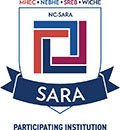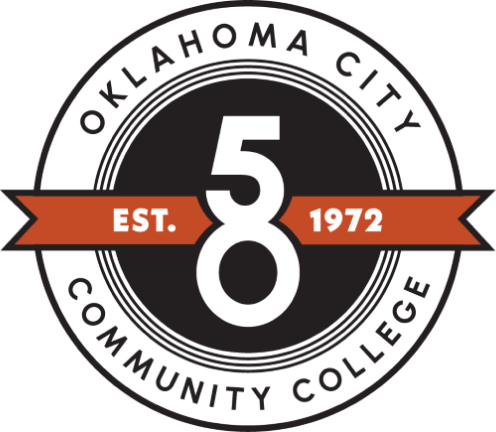Multicultural Multicultural Books
Multicultural Books
Educating Immigrant Students in the 21st Century: What Educators Need to Know
Generation 1.5 meets college composition: issues in the teaching of writing
Generation 1.5 in College Composition: Teaching Academic Writing to U.S
Freedom's plow: teaching in the multicultural classroom
Asian Americans: contemporary trends and issues
Improving the first year of college: research and practice
Teaching for change: the difference, power, and discrimination model
Effective Teaching: A Guide for Community College Instructors
Multicultural strategies for education and social change: carriers of the
Teaching diverse populations: formulating a knowledge base, Volume 1944
White teachers, diverse classrooms: a guide to building inclusive schools
Innovative teaching strategies in nursing and related health professions
Second language students in mainstream classrooms: a handbook for teachers
Handbook of undergraduate second language education
Teaching science to language minority students: theory and practice
Meeting the Needs of Second Language Learners: An Educator's Guide
Second language writing: research insights for the classroom
Multicultural Books-in-print Resources
Coughlin, L., Holihan, K. & Wingard, E.. Enlightened power: How women are transforming the practice of leadership. New York: John Wiley, 2005.
The first section of the text begins with exposing the foundation necessary before leadership can be transformed. The essays in this section emphasize the importance and reasons behind “self-awareness and the ability to shift one's context (and that of others) to achieve something new.” The text stresses that as gender roles are transformed, leadership style will be impacted. Mentoring, cross-gender communication, and moving beyond authoritative control are emphasized. Reoccurring themes point to a reexamination of value and belief systems, open and meaningful communication, and changes to context. Essays exemplify the connections between self, work, and society illustrating a circular, not linear, direction.
Ferris, Dana R. Treatment of Error in Second Language Student Writing. Ann Arbor, Michigan: U of Michigan P, 2002. ISBN: 0-472-08816-5
Emphasizes error treatment as one of the key second language (L2) writing issues faced by classroom teachers, teacher trainers, and teacher researchers. The author tackles this controversial and challenging topic in a concise, user-friendly, theory-into-practice book. This book pulls together the results of a variety of classroom research projects and the development of teaching materials for ESL writing classes and teacher preparation courses into a coherent and holistic approach to the treatment of error in L2 writing classes. The book emphasizes that L2 student writers need a focus on different linguistic issues or error patterns than native speakers, feedback or error correction that is tailored to their linguistic issues or error patterns, and instruction that is sensitive to their unique linguistic deficits and needs for strategy training (Preface, Chapter 1).
Chapter 3, Preparing L2 Writing Teachers to Treat Student Error, provides some important issues for preparation, practice, and resources.
Chapters 4 & 5, Responding to Student Errors: Issue and Strategies and Beyond Error Correction: Teaching grammar and Self-Editing Strategies to L2 Student Writers, as their titles indicate, emphasize issues and strategies.
Ferris, Dana R. Response to Student Writing: Implications for Second Language Students. Mahwah, New Jersey: Lawrence Erlbaum Associates, 2003. ISBN: 0-8058-3657-8
This book's purpose is to synthesize and critically analyze the literature on response to the writing of second language (L2) students and to discuss the implications of the research for teaching practice in the critical areas of written and oral teacher commentary, error correction, and peer- response. The primary goal of this book is to present current theoretical perspectives on response (Preface).
Chapters 1-5 offer research on various topics of student writing. Part II, Chapters 6-8 offer application. Chapters 6, 7, & 8 are of primary focus: Preparing Teachers to Respond to Student Writing, Suggestions for Error Correction, and Implementing Peer Response.
Fletcher, J. K.. Disappearing acts: Gender, power, and relational practice at work. Cambridge, MA: MIT Press, 2001.
Addresses concerns regarding the dismissal of certain types of acts and behaviors that are not only routinely discounted in organizational settings but often produces a negative impact for the individual (s) exhibiting these types of behaviors. Teamwork, collaboration, partnership, and learning are behaviors that are studied and come into question when looking at relational work.
Harklau, Linda, Kay M. Losey, Meryl Siegal. Generation 1.5 Meets College Composition: Issue in the Teaching of Writing to U.S.- Educated Learners of ESL. Mahwah, New Jersey: Lawrence Erlbaum Associates, 1999. ISBN: 0-8058-2955-5
Works from a perspective that casts writing and instruction as socially situated and constructed; the chapters of this book frame issues, raise questions, and provide portraits of language minority students and the classrooms and programs that serve them. A diversity of contexts, populations, programs, and perspectives are presented by the contributors of this book. Collectively the chapters serve to characterize the shared attributes and diversity of language minority writers. Authors consider how experiences in U.S. K-12 schooling and status as nonnative language speakers and writers of English combine to create the unique linguistic and academic traits of long-term residents (Preface).
Kottak, Conrad Phillip and Kathryn A. Kozaitis. On Being Different: Diversity and M ulticulturalism in the North American Mainstream, 3rd ed. N.Y.: McGraw-Hill, 2008. ISBN: 0-07-353089-1
Responds to a national call to understand and live resourcefully in our multicultural society. The concept of culture must be central to curricula that emphasize diversity, cross-cultural communication, and international relations. As a thematic text it illuminates our understanding of human variation and the role of multiculturalism in the social organization of contemporary Western societies. A holistic, empirical, comparative, and interdisciplinary perspective informs our discussion of diversity and multiculturalism. A survey of major aspects of diversity and multiculturalism is presented (Preface). Chapters 1 & 2 provide information on American Culture and aspects of culture.
Locke, Don. C. Increasing Multicultural Understanding: A Comprehensive Model, 2nd ed.. Thousand Oaks, CA.: Sage Publications, Inc., 1998. ISBN: 978-0-7619-1119-7
Presents an overview of cultural groups and helps identify characteristics of cultures, make comparisons between the dominant culture and culturally diverse groups, make comparisons between culturally different groups, and use that information to develop strategies or interventions. This book offers a process toward implementation of effective education and counseling strategies for culturally diverse populations (Introduction). Chapter 1 provides a model with ten elements, five components of cultural assumptions and values, themes; Chapters 2-12 each focus on a specific cultural group and contain questions for Review and Reflection at the end of each chapter.
Olson, Walter R. and William A. Sommers, Ph.D. A Trainer's Companion: Stories to Stimulate Reflection @ Conversation @ Action. Highlands, Texas: aha! Process, Inc., 2004. ISBN: 1-929229-39-9
This books purpose is to build the individual and organizational capacity to communicate, practice dialogue, and sustain collaborative group processes. Practicing new and different ways of talking to one another helps widen perspective and incorporate diverse thoughts. It can also lead to collaborative problem solving. Stories offer bite-sized learning experiences that are short and to the point; they frequently come to us in metaphor. As Bob Samples wrote in The Metaphoric Mind, the brain processes information using metaphors. Stories are a familiar cultural form. (Introduction)
Diller, Jerry V. Cultural Diversity. 3rd ed. Belmont, CA.: Wadsworth Cengage
Learning, 2007. ISBN: 10:0-495-12764-7
Hart, Sura and Victoria Kindle Hodson. The Compassionate Classroom: relationship
based teaching and learning. Encinitas, CA.: PuddleDancer Press, 2004. ISBN: 1-892005-06-9
Payne, Ruby K., Ph.D. A Framework for Understanding Poverty . 4th ed. Highlands, Tx.:
aha! Process, Inc., 2005. ISBN: 978-1-929229-48-2
Rosenberg, Marshall B., Ph.D. Nonviolent Communication: A Language of Life. 2nd ed.
Encinitas, CA, : PuddleDancer Press, 2003. ISBN: 978-1-892005-03-8
Skolnick, Jerome H. and Elliott Currie. Crisis in American Institutions. 13th ed.
Boston: Pearson, 2007. ISBN: 0-205-47215-X
Spradlin, Lynn Kell and Richard D. Parsons. Diversity Matters: Understanding Diversity
in Schools . Belmont, CA.: Wadsworth Cengage Learning, 2008. ISBN: 10: 0-495-18952-9









